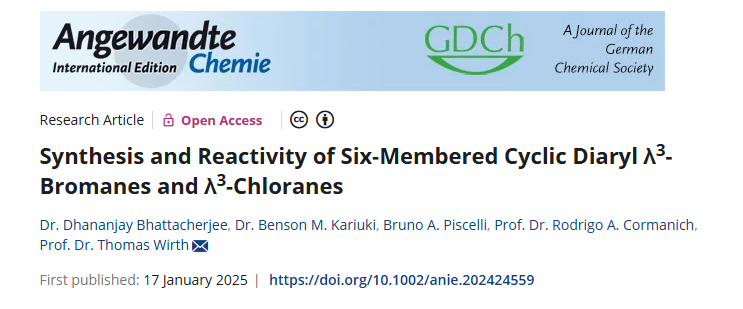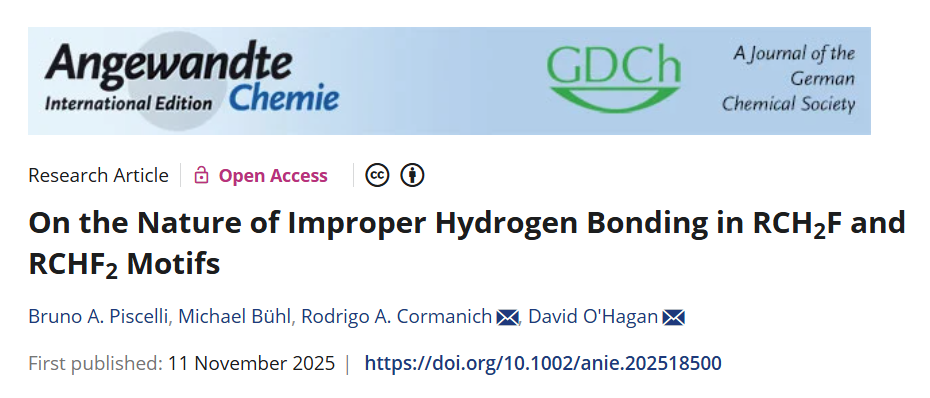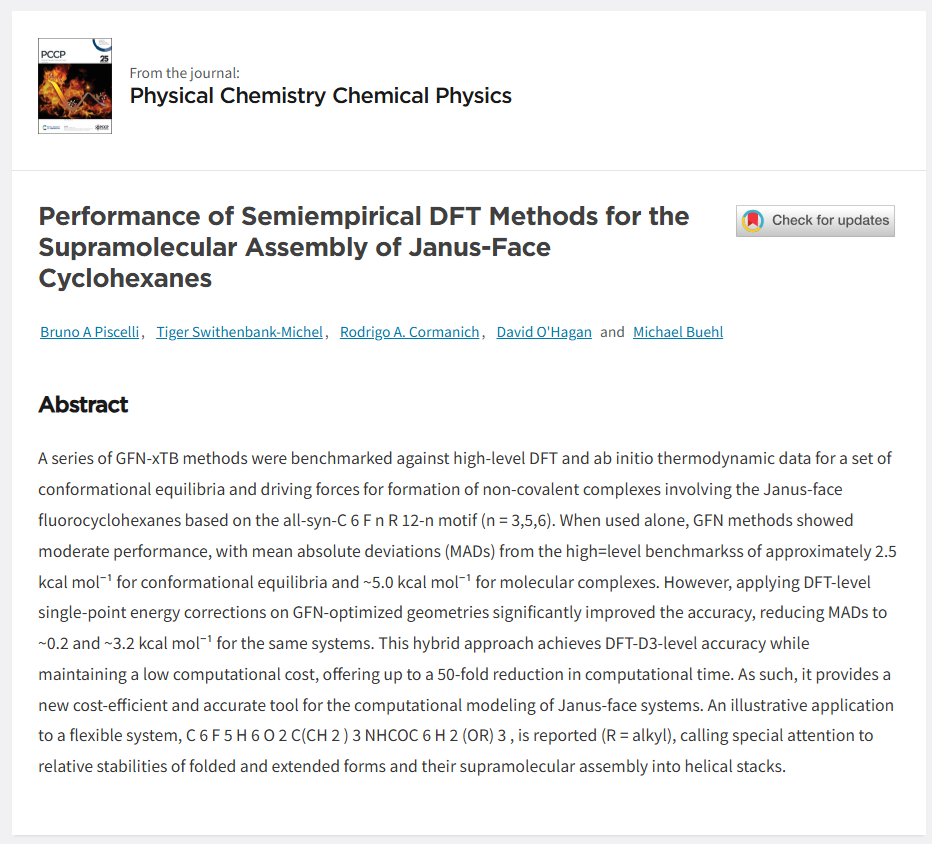In our latest publication, we explore the synthesis and reactivity of six-membered hypervalent bromine(III) and chlorine(III) compounds, broadening the scope of halogen chemistry beyond iodine analogs. This study is the result of a collaboration with Professor Thomas Wirth’s lab, where we combined synthetic efforts with computational investigations to elucidate key mechanistic aspects. We introduce novel six-membered cyclic λ³-bromanes and λ³-chloranes, synthesized via diazonium salts under mild conditions. Through single-crystal X-ray diffraction and conformational studies, we analyzed the bonding patterns crucial for their thermodynamic stability and observed pronounced π–π stacking interactions within their crystal lattice. A central aspect of our work was understanding bromonium ion formation, a key intermediate in organic transformations. Using computational chemistry, we investigated energy profiles and electronic structures governing these species, providing a deeper understanding of their stability and reactivity. The compounds demonstrate remarkable versatility as radical precursors and electrophilic reagents, enabling metal-free O- and S-arylations and intermolecular and intramolecular biaryl couplings. Notably, the Cu(I)-mediated biaryl coupling reactivity of these compounds offers a complementary approach to existing five-membered hypervalent halogen derivatives. This study not only expands the landscape of hypervalent halogen chemistry but also opens avenues for novel synthetic applications, particularly in selective functionalization and catalysis. We are excited to share this contribution with the scientific community and look forward to further exploring the potential of hypervalent bromine and chlorine compounds. Stay tuned for more updates on our research!
Read the full paper here: https://onlinelibrary.wiley.com/doi/10.1002/anie.202424559


